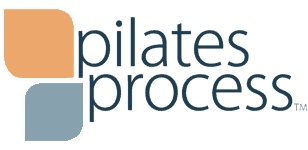Why the application of Arthrokinematics is so much more exciting than it sounds.
Bone Rhythms is the Franklin Method®’s user friendly term for Arthrokinematics – the micro movements that occur in our joints. For example, reach an arm up to the ear. The big moment is the arm bone moving away from the body and upwards. The micro movements of the shoulder joint include a backwards spin and a downwards glide of the humeral head in the socket.
These bone rhythms are key to joint integrity, affecting how resilient a joint is, how flexible we feel and how integrated and coordinated (=strong) our movements are.
It can be a tricky sell because it all sounds so technical and dry. And although I personally find this topic fascinating, I get that it isn’t terribly exciting for most.
But, if you want to really improve function, pain levels, and flexibility in an area, to really progress, then taking a moment to learn the inherent bone rhythms can make an instant and dramatic difference to movement quality. And movement quality effects pain, range of motion and strength.
From a Teaching Perspective
As a movement teacher learning bone rhythms was eye opening for me. It’s what cues are built on and gives one a much more fundamental grasp of joint movement. It helped my understanding in other workshops as I understood why “good movement” was labeled as such. As it turns out there is a right and wrong. Or in the words of Eric Franklin, anatomy is not opinion. Arthrokinematics is not opinion. It’s in the design of our joints and the direction of pull of our soft tissue.
Taking a moment to specifically learn these micro movements is step 1.
Embodying them is step 2.
We really need both steps to make organic, true change.
This second step of embodiment is where Franklin Method® training really shines. A lot of clinicians utilize arthrokinematics. Few help with embodiment.The FM approach really allows the necessary time to sense and observe, layering on (bone rhythm accurate) imagery to help alter function and improve movement,. This can help us better sense a deep level of joint function and embody a new movement pattern.
The full Franklin Method® training was mind-blowing for me. I was at a point in my teaching and knowledge that made it easy and natural to incorporate. Sometimes taking snippets of it to apply to your own body and/or your teaching can be a more practical beginning.
This is why we offer shorter and very targeted FM workshops. So that you can walk away owning this information to create fundamental change.
Laura Helsel Gauthier
Director, Pilates Process
Writer: Teaching Therapeutic Movement
Blogger, Presenter, Certified FM Educator
